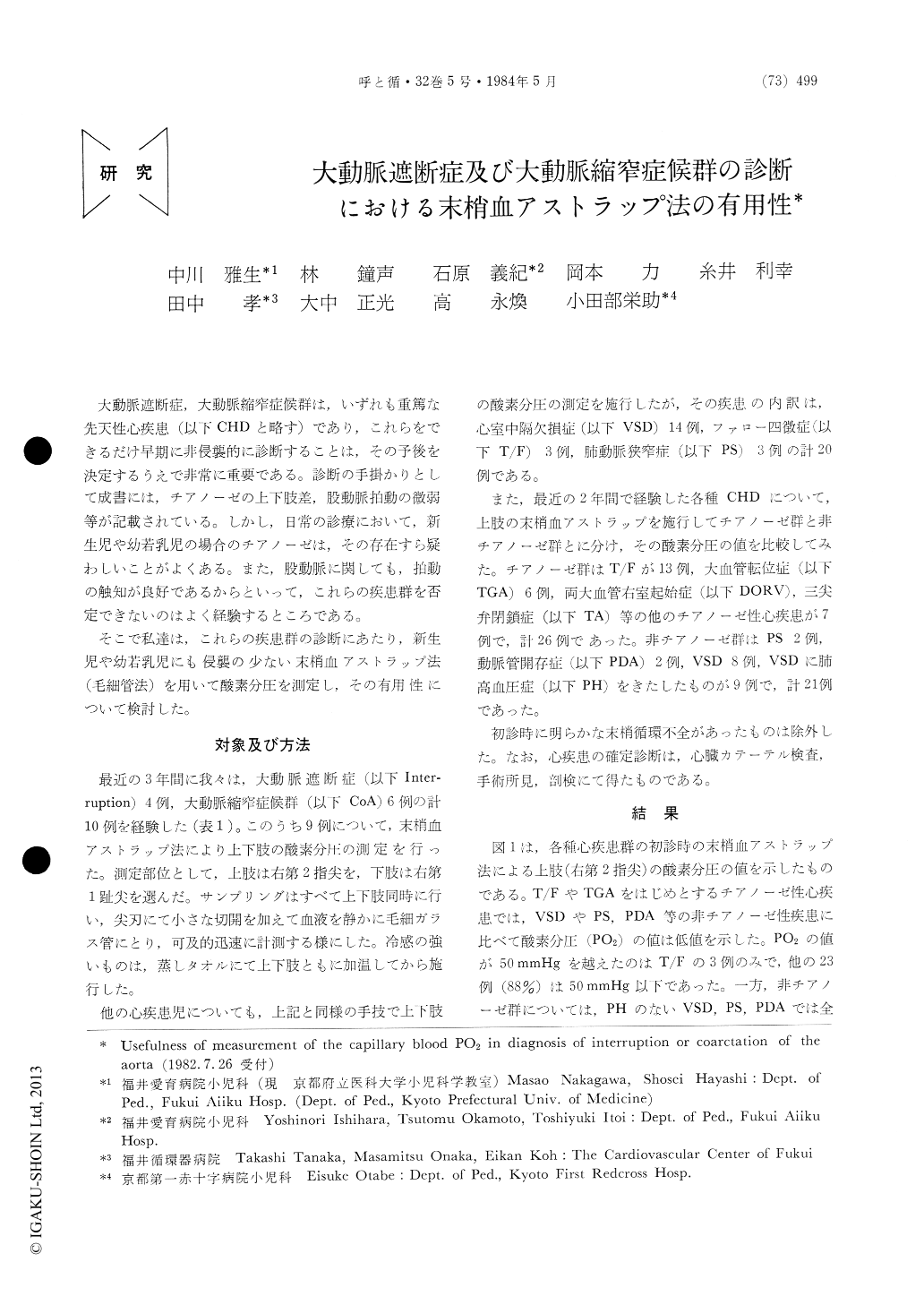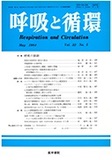Japanese
English
- 有料閲覧
- Abstract 文献概要
- 1ページ目 Look Inside
大動脈遮断症,大動脈縮窄症候群は,いずれも重篤な先天性心疾患(以下CHDと略す)であり,これらをできるだけ早期に非侵襲的に診断することは,その予後を決定するうえで非常に重要である。診断の手掛かりとして成書には,チアノーゼの上下肢差,股動脈拍動の微弱等が記載されている。しかし,日常の診療において,新生児や幼若乳児の場合のチアノーゼは,その存在すら疑わしいことがよくある。また,股動脈に関しても,拍動の触知が良好であるからといって,これらの疾患群を否定できないのはよく経験するところである。
そこで私達は,これらの疾患群の診断にあたり,新生児や幼若乳児にも侵襲の少ない末梢血アストラップ法(毛細管法)を用いて酸素分圧を測定し,その有用性について検討した。
The capillary blood PO2 was determined for sam-ples, simultaneously drawn from the upper and the lower extremities of 29 patients with CHD. The PO2 difference between the upper and the lower extremities was 0.1-53.4 mmHg (median : 14.4 mmHg) for 9 patients with Interruption/Co-arctation of the aorta, and 0.2-11.2 mmHg (medi-an : 2.9 mmHg) for the other CHD 20 patients.
In the former group, when heart failure develop-ed, the PO2 difference decreased to 0.6-9.8 mmHg, due to the reduced O2 saturation in the upper ex-tremities. Measurement of the capillary blood PO2 in CHD patients is believed to be useful in detecting the pre-sence of Interruption/Coarctation of the aorta and to predict the exacerbation of the circulatory con-dition of such patients.

Copyright © 1984, Igaku-Shoin Ltd. All rights reserved.


